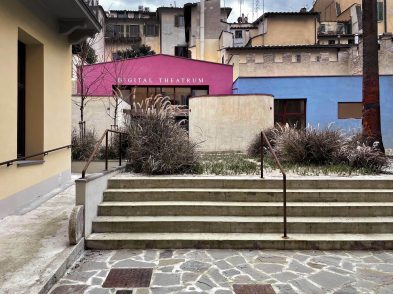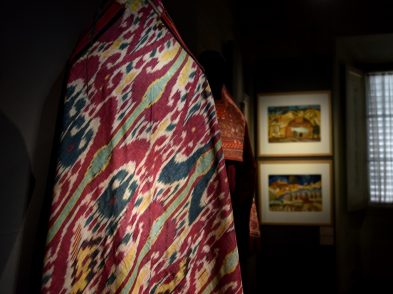In New York City, it is easy to find oneself rambling through a forest overgrown with forgotten history. Buried in that vast wood, far from Florence and tucked away in an outer borough, is a striking, but often overlooked, intersection between two legendary Italian lives: the Garibaldi Meucci Museum.
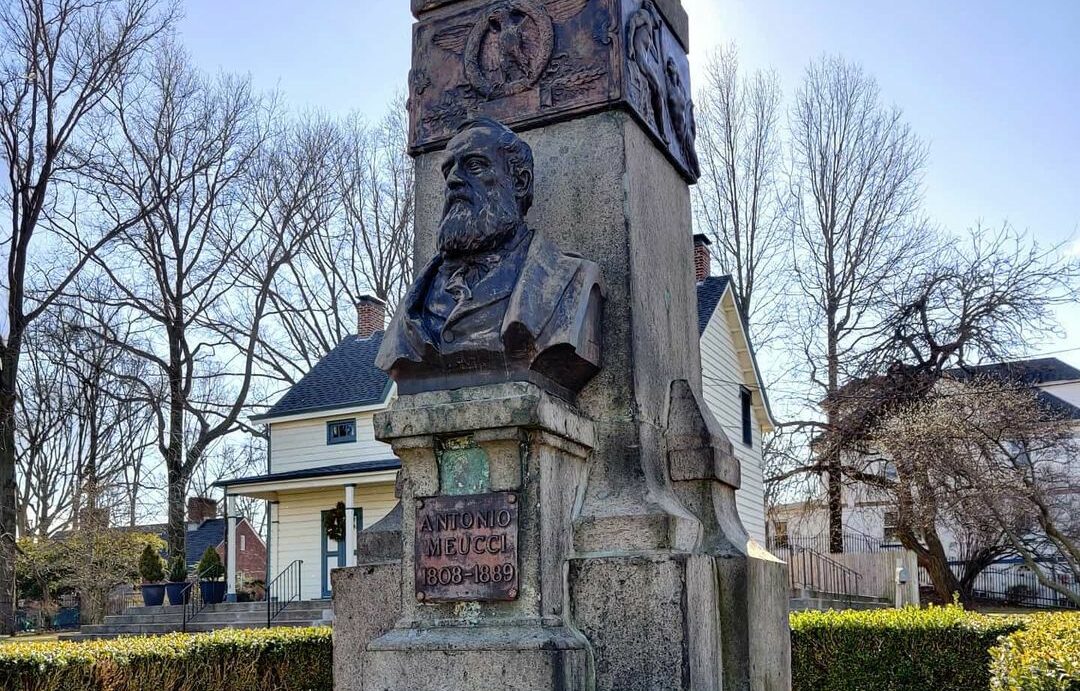
Garibaldi Meucci Museum ph. @nerdyheartphotography
A gemstone set in the history of the Risorgimento can be found in a quiet corner of Tompkins Ave, in the Clifton section of Staten Island overlooking the Narrows. The setting is theatrical. If New York City is the stuff of fairytales, then Staten Island is the boisterous red-headed stepchild. Although the suburban residents have been connected to Brooklyn by the Verrazzano Bridge since 1964, Staten Islanders have a history of feeling politically ostracized and neglected by the rest of the city. When Antonio Meucci and Giuseppe Garibaldi became housemates in 1850, this quiet, wooded island was a short ferry ride from a rapidly industrializing Manhattan, but a world away. Their home, now the Garibaldi Meucci Museum, stands as a testament to how friendship can provide strength in times of tremendous adversity. Meucci and Garibaldi shared a passion for liberating Italy from foreign control as their country barreled toward the difficult process of national unification.
Antonio Meucci was born in the San Frediano district of Florence and worked as a mechanic at the La Pergola theater, where he met his wife and fellow Florentine, Ester Mochi. They moved to Cuba to work at Havana’s Teatro Tacón. When the theater was destroyed in a fire in 1850, the couple went in search of new opportunities, arriving in Staten Island that spring with little financial means. Meucci’s biography is the story of a man who, despite his best efforts, often found himself down on his luck. The inventor would eventually manage to purchase a modest home in the Gothic revival design. Typical of houses in the area, it had four symmetrical bedrooms with steeply sloped ceilings over four symmetrical ground-floor rooms connected by twelve stairs. Meucci built a lab in the basement for his work and, as Esther became increasingly incapacitated with severe rheumatoid arthritis, he built the first telephone-like device to connect her bedroom to his workspace.
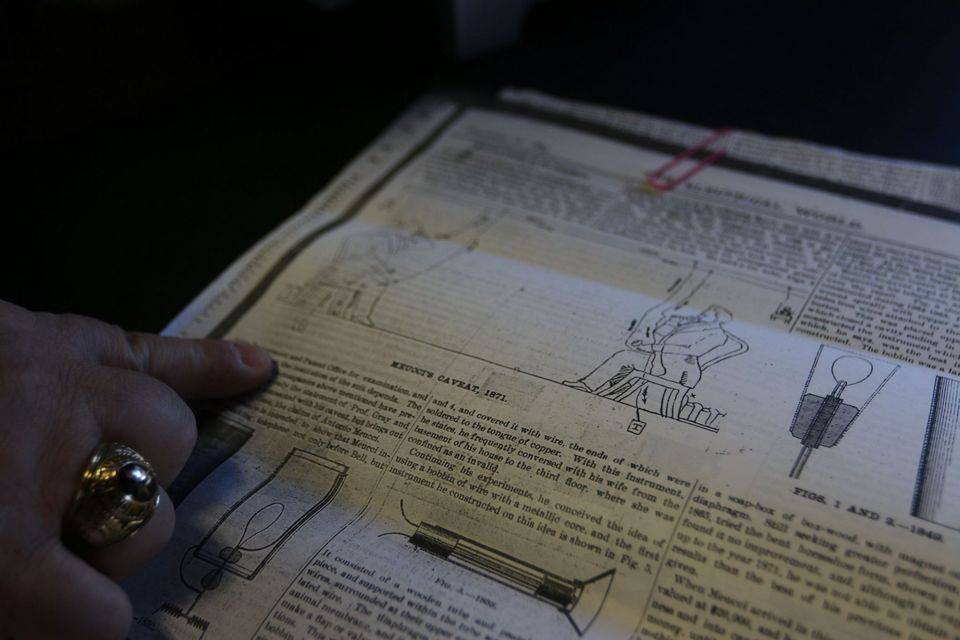
Life in Staten Island did not prove easy for Meucci. His wife’s health steadily declined, he was badly burned in a horrific engine fire on the ferry and he lost the ownership of his home. The most poignant tragedy of Meucci’s life was that he was unable to secure a patent for his telephone because he was poor, spoke little English and faced discrimination in the courts.
He sought out Giuseppe Garibaldi at a friend’s dinner party and convinced the freedom fighter to rent a room in his home. Garibaldi had come to New York at the age of 43, distraught after the death of his beloved wife, Anita, a skilled cavalry rider who, carrying their fifth child, succumbed to malaria in the wake of the 1849 defeat in Rome. Garibaldi liked the quiet respite and enjoyed hunting and fishing with Meucci along the shore. As he look toward his return to Italy, Garibaldi planned the tactical invasion of the two Sicilies, at least in part, from this home.
Today, the first floor of the Garibaldi Meucci Museum holds many items of interest, including a piano that Meucci had a hand in building, maps, a death mask and a bust, which signifies that Garibaldi was the Grand Master of the Masons in Italy. The most exceptional artifacts can be found up the narrow staircase in the bedroom on the left. Laid out in what was Garibaldi’s bedroom is Meucci’s hand-held mirror while Garibaldi’s wooden chair holds the door open. We can see Meucci’s well-worn rocking chair, Garibaldi’s rare ceremonial red shirt (which was recently displayed on Ellis Island as part of the Sisters in Liberty from Florence, to Italy to New York, New York exhibition), Garibaldi’s tobacco pouch and cane, and one of only a few surviving incarnations of Garibaldi’s trademark velvet Turkish hat. The purple hat is breathtaking in its beauty and significance, while the cane reminds us that, despite his enormous legacy, Garibaldi wasn’t larger than life—probably around 5’6”, it seems.
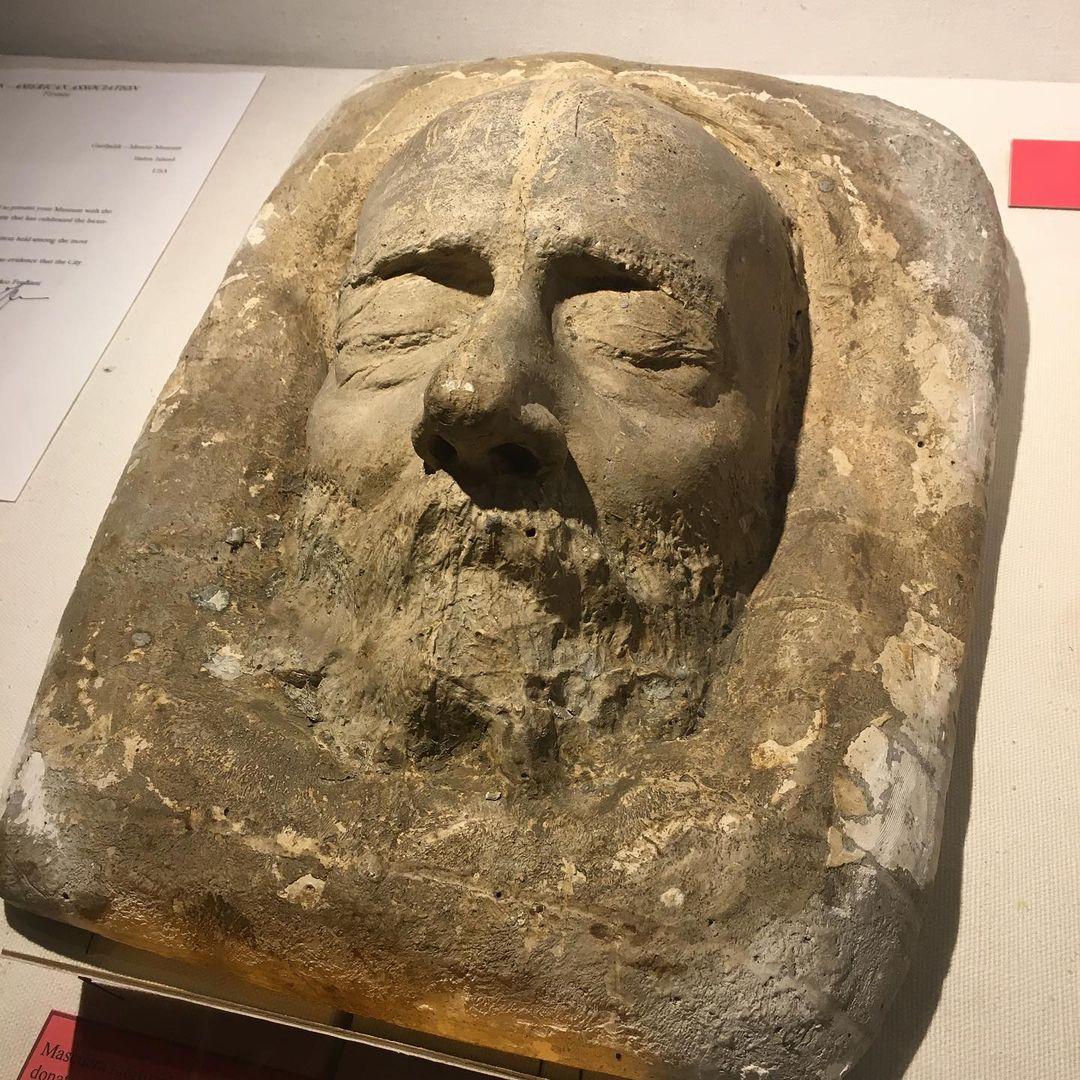
Death mask of Antonio Meucci
While almost everything in the house was sold off, the museum has worked diligently to re-acquire these items. Some were a gift directly from Garibaldi’s daughter. Guests from all over the world come to this corner of Staten Island, despite the logistics. Many are overcome by emotion: university students from Italy with tears in their eyes looking into Meucci’s mirror and a nonagenarian from Brazil, who could barely climb the stairs but, determined, did so to cradle Garibaldi’s cane. Even Garibaldi’s grandson appeared at the door, resembling his grandfather to the extent that it was like seeing a ghost.
Despite these trying times, the museum staff is looking ahead. A modern painting of Meucci and Garibaldi surveys the staff as they reorganize the exhibition space and sift through pictures and documents that had previously been in storage. Plans are in the works to install a new sculpture by Venetian artist Giorgio Bortoli on the grounds this coming summer as a symbol of friendship with Venice, highlighting social, cultural and economic connections as well as the theme of water. The Garibaldi Meucci Museum is becoming a space dedicated to the history of the Risorgimento on the global stage.
At a human level, this is a place that speaks to the struggles of Italians in exile and as immigrants, who showed tremendous perseverance and innovation. It is the story of intersecting lives and a lifelong friendship—just look quietly at the chairs from which Meucci and Garibaldi weaved long conversations.
Did you know…?
In the 1850s, there were few Italians living in Staten Island. With more than 55 per cent of residents identifying as having Italian ancestry, the island county now has the highest reported proportion of Italian Americans in the United States.
420 Tompkins Ave, Staten Island, NY 10305, USA
The museum is a National Landmark owned and operated by the Order Sons and Daughters of Italy in America.





